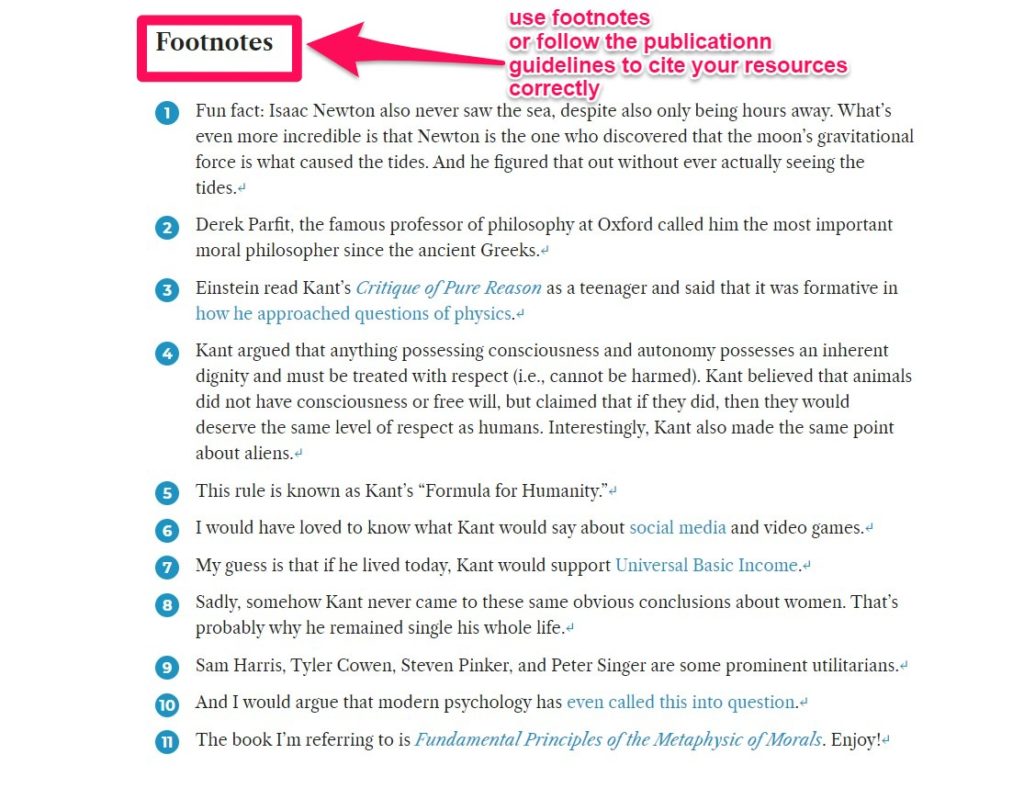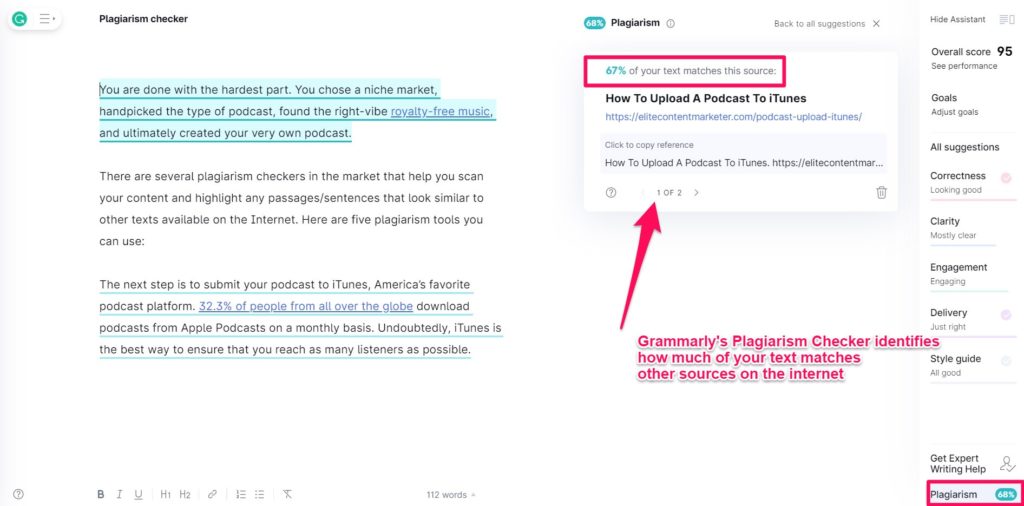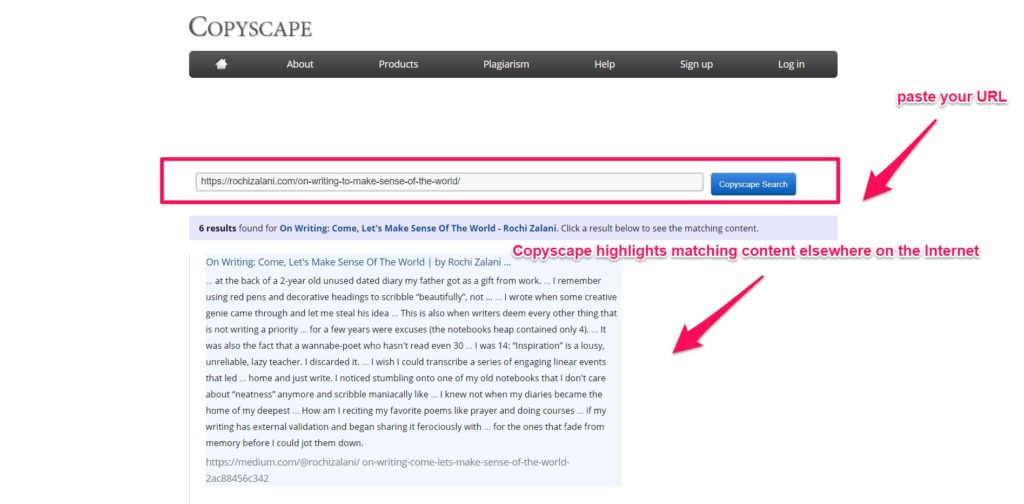Plagiarism is using someone else’s idea without giving them proper credit. It is different from using third-party resources to add extra credibility to your work.
Besides being unethical and having legal consequences, plagiarism can make your reputation as a writer go downhill and erode the trust of your readers. This is why in this article, I tell you 5 effective ways to avoid plagiarism.
But before that, let me answer some of the most commonly asked questions about plagiarism.
Frequently Asked Questions About Plagiarism
Ever wondered why you should worry about plagiarism at all? Or wondered how you can protect your content from being plagiarized? I answer all of those questions for you below:
Why should you avoid plagiarism?
You should avoid plagiarism for two reasons: 1) Plagiarism is unethical because you are stealing someone else’s copy and it is a form of intellectual theft. 2) This not only means that the original writer can take legal action against you but producing duplicate content can also tank your search rankings on Google.
What are the main causes of plagiarism?
The main cause of plagiarism is not keeping a track of the resources you have used for your research. This translates to not giving proper credit where it is due and plagiarizing content.
How can we prevent plagiarism?
- Paraphrase correctly
- Cite all your resources
- Keep a track of all the resources you have used
- Quote directly and give credit to the original author
- Use a plagiarism checker like Grammarly
How do you not plagiarize facts?
If you are using facts in your writing, quote the source of your information. You can also directly quote someone else’s written and/or spoken words. “Common knowledge” or something that is accepted by readers without requiring a source (such as an idiom, a proverb, famous sayings) is not considered plagiarized content.
What is common knowledge (and how to cite it…?)
Common knowledge is information that is validated by readers without requiring a resource – for example, proverbs, idioms, and famous sayings. This can also be specific to certain niches/fields where long-established theories and facts are considered commonplace or foundational. If you are absolutely certain of a piece of content being common knowledge (and that your readers will accept it as so), you don’t need to cite it.
How can you protect your intellectual property from getting plagiarized?
- Use tools like Copyscape and Grammarly to find content copied from you on the Internet
- Include clear copyright on your content
- Do a Google search of your content to check if it has been wrongfully published anywhere
- Set up a custom Google Alert for your name or your content
- Add a watermark to your images.
Now that you know the basics of plagiarism, let’s check the 5 ways you can avoid it:
5 Effective Ways To Avoid Plagiarism
It is not all scary. You can avoid plagiarism in your writing by keeping account of these 5 simple steps:
1. Paraphrase Correctly
Other writers can inspire your writing style or opinions. That’s totally cool. But copying them word-to-word is considered plagiarising (unless you quote them).
Paraphrasing is when you write someone else’s content in your own words. This involves a bit of trickery and strategy. Here is how you can do it without a hassle:
a) Reword your writing by avoiding too many similar phrases from the original writing
b) Change the sentence structure – for example, use active voice if the original writer has written in the passive voice
c) Personalize the text by adding some of your own ideas/opinions/stories into the content
You still need to cite the original author even when you are paraphrasing his/her/their idea, which brings us to the next pointer.
2. Cite All Your Resources
Keep a track of the resources you are using while writing. This way you can cite all of them properly at the end. A citation identifies that a piece of writing or an idea is not your own.
How you cite is dependent on the style guide you are following. For example, APA is a common citation style used in psychology researches and the education field. There many resources (like Citation machine) that help you cite a URL or a research paper adhering to the style guide’s guidelines.
You need to follow the guidelines of the publication you are writing for to ensure a correct citation of all your resources. If you are writing for your own blog, you can use a ‘reference style’ citation like blogger and author, Mark Manson does in his ‘Footnotes’:

3. Use Quotations
Quoting means you are allowed to copy what someone wrote or said word-to-word. This text must be in quotation marks and attribute directly to the author. I often use quotation blocks when citing quotes from books:

4. Preventing Self-Plagiarism In 2 Simple Ways
You wrote content for a major publication. Now the time has come when you need to write something similar. Can’t you just copy-paste your own content?
No, you can’t. That’s self-plagiarism. Once an article is published, you can’t reuse it elsewhere. But what you can do is recycle your content. Here’s how:
a) Check Your Content Repository, Notes, and Bookmarks
Save your resources when you write an article. This way, you can find a repository when you need to write something similar. I personally create outlines and keep them even after the post is published. This way, whenever I need to rewrite something similar, I can just refer to my outline also containing all my resources.
The result? You can write the content in half the time.
b) Cite Your Previous Work
This practice is identical to what we call “internal linking” in digital marketing. Meaning, if you ever come across a section in your article which is similar to what you have already discussed in your previous article, hyperlink it.
For example, in this article, I hyperlinked 4 of the previous relevant works that were published previously on ECM’s website itself.

5. Use Plagiarism Checkers
There are several plagiarism checkers in the market that help you scan your content and highlight any passages/sentences that look similar to other texts available on the Internet. Here are the best two plagiarism tools you can use:
a) Grammarly
Grammarly not only corrects your grammar, typos, and writing style, it also checks for plagiarism. Just copy-paste your content into the app and click on “Plagiarism” – Grammarly will highlight how much of your text matches some other source on the internet:

b) Copyscape
Copyscape remains one of the oldest and the most popular plagiarism checking tools in the market. But this tool in its free version only allows you to check plagiarism for published versions. You simply go to their website, copy-paste your content’s URL, and it’ll display results if the article had been plagiarized anywhere else.
The premium version allows you to check for your articles before publication.

Other alternative plagiarism checkers include Duplichecker, Copywritely, and Siteliner.
Final Thoughts
If you’re a writer, plagiarizing content can result in financial losses, legal hassles, and damage to your brand. You should never use someone else’s original work without citing them. Avoiding plagiarism is crucial for maintaining a healthy growth trajectory of your writing career.
“Hopefully, this article helped you understand effective ways to avoid plagiarism in your writing.
What strategies do you adopt to ensure content originality? Have your articles ever been passed off as someone else’s? Do share your experiences and advice with us in the Comments section below.
